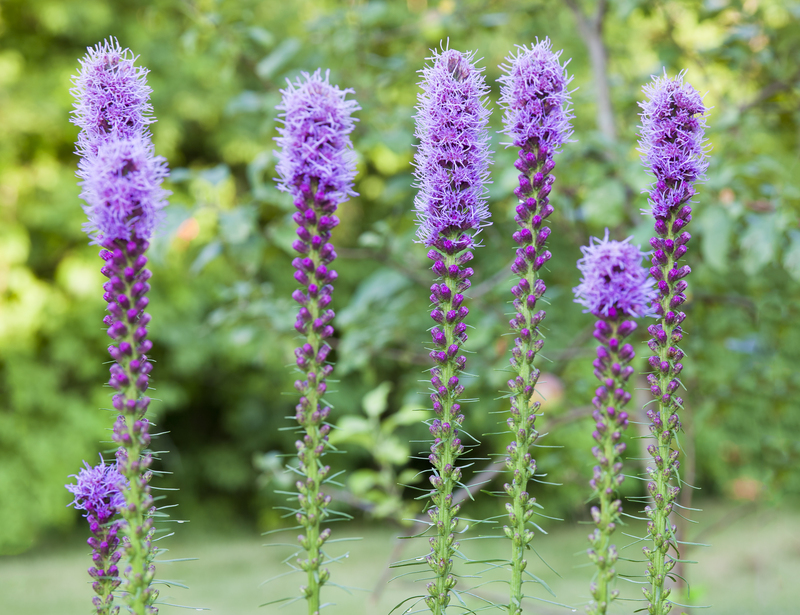Sustainable Soil Restoration via Waste Utilization
Posted on 18/08/2025
Sustainable Soil Restoration via Waste Utilization: A Comprehensive Guide
Sustainable soil restoration is at the heart of global efforts to secure food production, restore ecosystem health, and combat climate change. One revolutionary avenue in achieving this goal is through waste utilization. This approach not only mitigates environmental burdens but also revives degraded soils for lasting agricultural productivity. In this article, we explore how sustainable soil restoration can be achieved through innovative waste management strategies, highlighting the science, benefits, methods, challenges, and real-world examples of sustainable soil improvement through waste reuse.
Understanding Soil Degradation and the Need for Restoration
Before delving into soil restoration via waste utilization, it's important to understand why soils are deteriorating globally. Soil degradation stems from erosion, contamination, nutrient depletion, salinization, and loss of organic matter. According to the FAO, over one-third of the world's soils are moderately to highly degraded due to mismanagement and over-exploitation.
- Reduced crop yields: Degraded soils struggle to support robust plant growth.
- Biodiversity loss: Healthy soil harbors a vast web of organisms; degradation disrupts this balance.
- Poor water retention: Deteriorated structure leads to increased drought vulnerability.
- Increased greenhouse emissions: Eroded and depleted soils can release stored carbon.
The Case for Sustainable Soil Restoration
Restoring soils in a sustainable way goes beyond simply replenishing nutrients. It involves holistic practices that increase productivity without causing ecological harm, sequester carbon, and recycle resources wisely. Waste utilization for soil restoration fits seamlessly into the circular economy, transforming what was once discarded into valuable soil amendments.

How Waste Can Be Used for Sustainable Soil Restoration
Waste is often viewed as a problem, but in the context of sustainable soil amendment, it is a resource with untapped potential. Key waste streams currently utilized in soil restoration include:
- Organic agricultural residues (crop stubble, straw, livestock manure)
- Industrial by-products (fly ash, gypsum, biochar)
- Municipal solid waste (composted food and yard waste)
- Sewage sludge biosolids
- Green waste (grass clippings, leaves)
These waste-derived soil amendments serve multiple purposes:
- Replenishing soil organic carbon
- Restoring essential nutrients such as nitrogen, phosphorus, potassium, and trace elements
- Improving soil structure and water holding capacity
- Encouraging soil microbial diversity
- Immobilizing contaminants and improving soil remediation
Key Methods in Soil Restoration via Waste Utilization
Composting Organic Waste
Composting is the aerobic decomposition of organic matter--such as food scraps, manure, and green waste--into a stable, nutrient-rich soil amendment commonly known as compost. When applied to soils, compost enhances structure, increases organic content, and fosters beneficial microbial activity.
- Reduces landfill waste and methane emissions
- Improves nutrient cycling
- Suppresses soilborne diseases naturally
Biochar Addition
Biochar is a stable, carbon-rich solid produced from the pyrolysis (heating in the absence of oxygen) of organic biomass waste. It is increasingly used in sustainable soil rejuvenation due to its unique properties:
- Increases soil carbon storage and fertility
- Improves cation exchange capacity for nutrients
- Reduces nutrient leaching and greenhouse gas emissions
Utilizing Biosolids
Properly treated sewage sludge, or biosolids, are rich in essential nutrients and organic matter. When applied with care, biosolids can restore impoverished soils--especially those in urban or peri-urban contexts.
- Enhances plant growth without synthetic fertilizers
- Reduces pressure on landfill space
- Must be monitored for contaminants (heavy metals, pathogens)
Application of Industrial By-products
Certain industrial by-products, like fly ash (from coal combustion) or phosphogypsum (a byproduct of fertilizer production), can neutralize acidic soils and add structural minerals. However, strict guidelines must be followed to avoid introducing pollutants.
The Science Behind Restorative Waste Utilization
The effectiveness of sustainable soil restoration through waste hinges on the fundamental principles of soil science. Healthy soils require:
- Adequate levels of organic matter to act as a food source for microbes and enhance structure
- Diverse microbial life for nutrient cycling and disease suppression
- Balanced nutrient supply for optimal plant growth
- Good pH and salinity levels to prevent plant toxicity
Waste-derived amendments can address these requirements by:
- Increasing soil organic carbon
- Rebalancing nutrient profiles
- Suppressing soil-borne pathogens via competitive microflora
- Reducing erosion by enhancing aggregate stability
In addition, some waste products--like certain types of biochar and fly ash--can trap and neutralize toxic compounds, effectively functioning as a tool for soil remediation.
Benefits of Sustainable Soil Restoration via Waste Utilization
- Environmental sustainability: Cutting reliance on synthetic inputs and decreasing landfill loads
- Economic viability: Turning on-farm and municipal waste into cost-effective resources
- Increased soil productivity: Enhanced yields, water holding, and resilience to climate variability
- Climate change mitigation: Sequestering carbon and reducing greenhouse gas emissions from waste
- Biodiversity gains: Revived soil ecosystems support pollinators, beneficial insects, and microbes
Challenges in Implementing Waste-Based Soil Restoration
While the potential for sustainable soil recovery through wasted resources is immense, several hurdles must be overcome:
- Contaminant risk: Poorly treated wastes may introduce heavy metals, pharmaceuticals, or pathogens.
- Public perceptions: There may be reluctance to use waste-derived products, especially biosolids.
- Logistics: Collection, treatment, and transport infrastructures are sometimes lacking.
- Policy and regulation: Consistent quality standards and monitoring must be established.
- Site specificity: What works for one soil or climate may not be suitable elsewhere.
Proper training, transparent communication, and scientific research are essential to ensuring the safe, effective, and widespread adoption of waste-based soil restoration practices.
Global Success Stories: Sustainable Soil Restoration through Waste Utilization
Communities and industries worldwide are already reaping the rewards of these innovative approaches:
- China: Large-scale composting of rice straw and livestock manure has significantly rehabilitated degraded croplands, boosting productivity and cutting air pollution from open burning.
- Brazil: Biochar from sugarcane bagasse is transforming tropical soils, making them more fertile, less acidic, and more resilient to drought.
- Europe: Projects utilizing municipal compost and treated biosolids in urban parks and farmland have closed nutrient loops and revitalized urban soils.
- India: Fly ash is being safely incorporated into reclamation of wastelands and mine spoils under strict monitoring systems.
Best Practices for a Sustainable Soil Restoration Project Using Waste
For communities and businesses interested in initiating soil improvement via waste reuse, proper steps ensure success and safety:
- Assess local soil needs: Conduct soil testing for nutrient deficiencies, pH, salinity, and contamination.
- Select suitable wastes: Opt for organic residues, properly composted materials, or certified low-risk industrial wastes.
- Treat and monitor: Compost organic materials thoroughly. Test biosolids and industrial by-products for safety before application.
- Apply responsibly: Follow recommended application rates and methods (surface spreading, incorporation, or direct planting).
- Monitor outcomes: Continue soil and crop testing post-application to track improvements and detect any issues.
- Educate stakeholders: Communicate the science-backed benefits and safety protocols to farmers, residents, and local authorities.
Innovative Technologies Shaping the Future of Waste Utilization in Soil Restoration
Emerging technologies are making sustainable soil regeneration through waste smarter, safer, and more effective:
- Advanced composting techniques: Aerated static piles, high-temperature windrows, and in-vessel systems ensure rapid, pathogen-free composting.
- Precision agriculture: Digital mapping and sensors target soil amendments exactly where needed, maximizing impact and efficiency.
- Customized biochar production: Tuning feedstocks and pyrolysis conditions creates biochars tailored to specific soil types and needs.
- Waste pelletizing: Compacting organic and mineral wastes into pellets makes transport and application easier for large scale projects.
- Microbial inoculants: Introducing beneficial microbes enhances organic matter decomposition and soil disease suppression.

The Path Forward: Integrating Waste Utilization into Sustainable Land Management
The integration of sustainable soil restoration via waste utilization is not merely an ecological imperative--it is an economic and social opportunity. By adopting circular practices, societies reduce environmental hazards, cut costs, and create green jobs. Policy support, community engagement, and ongoing scientific research will be essential in scaling up these practices globally.
Whether you're a farmer, land manager, policymaker, or eco-conscious consumer, recognizing the value of waste in rebuilding the foundation of food systems--the soil--marks a crucial step towards a sustainable future.
Summary Table: Waste Types and Their Benefits in Soil Restoration
| Waste Type | Main Benefits | Precautions |
|---|---|---|
| Composted organic waste | Organic matter, nutrients, moisture retention | Avoid contamination, ensure full decomposition |
| Biochar | Carbon sequestration, structure, nutrient retention | - |
| Biosolids | Major nutrients, organic carbon, improves structure | Test for heavy metals, treat for pathogens |
| Industrial by-products | pH adjustment, minerals, reclamation of wasteland | Monitor for contaminants, regulatory approval |
Conclusion: Rethinking Waste for Soil Health
The journey toward sustainable soil restoration via waste utilization redefines the concept of "waste" as an invaluable asset in the fight for environmental resilience and food security. By transforming organic and industrial residues into tools for soil healing, humanity steps closer to a regenerative, green future. The stakes are high--but as the examples and science show, success is not just possible, but already underway. Restoring soils, one waste stream at a time, ensures the prosperity of generations to come.
Interested in sustainable soil solutions? Connect with local agricultural extension services, recycling initiatives, or environmental NGOs to start your soil restoration project using waste today!

